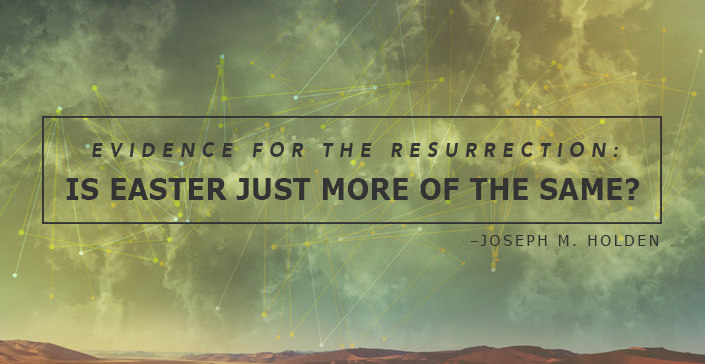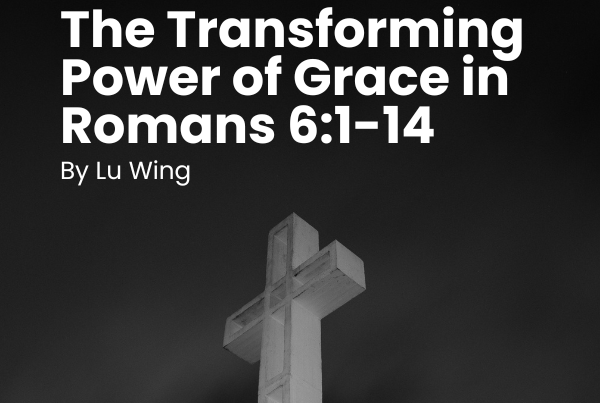
It has been said that “the resurrection of Christ is the capstone in the arch of Christianity, if it is removed Christianity crumbles.” Indeed, Paul warned of the negative implications if Christ did not rise from the dead, namely, we are still in our sins, our faith is empty, those who have died have perished forever, and we are men most miserable (1 Cor. 15:16-19). That the resurrection is the core of the Christian faith cannot be denied and that of nearly twenty sermons in the book of Acts feature the resurrection of Christ as the central message. Despite the importance of the resurrection as the heart of the gospel message (Rom. 10:9-10), some have mistakenly understood this crucial event as an hallucination or more of the same kind of dying and rising gods present in cultures throughout the ancient Near East.
The Resurrection as Hallucination?
Hallucinations describe the psychological state of seeing things that appear real but do not actually exist. Some have argued that the disciples’ intense grief and wishful thinking for their crucified Savior triggered these hallucinatory episodes known as “appearances.” Instances of hallucinations among some of the world’s religions certainly do occur, but usually they are either initiated by drugs or other techniques designed to induce an altered state of consciousness. However, there are several reasons to reject the hallucination theory. First, there is no evidence of drug use or technique-induced altered states of consciousness among Christ’s disciples, which is totally foreign to Judaism and to Christianity. Second, hallucinations are generally experienced by individuals and not mass groups. Paul said at least 500 witness had seen the risen Christ (1 Cor.15:6). Third, hallucinations last only short periods of time (seconds or minutes), not for forty days of physical appearances (Acts 1:3). If it was a hallucination, it was the largest in recorded history and lasted longer than any other hallucination! Fourth, the disciples did not expect Jesus to rise from the dead and, therefore, could not be projecting wishful thinking which could lead to hallucinations of His resurrection appearances. In fact, in several of Christ’s post-resurrectional appearances He was not immediately recognized which eliminates any “thought/psychic projection” of His appearance. Finally, the disciples who were depressed after Christ’s death were initially skeptical to believe the women’s report of the resurrection, suggesting that wishful thinking was not present.
The Resurrection as Legendary?
Some have attempted to identify the resurrection as legend or mythical storytelling not uncommon to the cultures of the ancient Near East. According to some, Christ’s resurrection story is similar to the Egyptian Osiris myth or the Mesopotamian stories of dying and rising fertility gods (e.g., Tammuz). However, these arguments have been met with strong criticism. First, the parallel stories only have superficial similarities. For example, none of these rising gods actually come back to life and walk the surface of the earth in the body that died and was buried, nor are witnesses involved that confirm a Christ-like physical resurrection. Second, the textual support for such legendary “resurrections” is scant or altogether absent and must be stretched to resemble anything like the Bible’s account of the resurrection and afterlife. In the case of Tammuz-Adonis, early texts do not have any trace of a resurrection account, they only appear some 150-300 years after Christ. This has led some to believe that the Tammuz story was actually influenced by the resurrection of Christ, and was reinterpreted in light of the success early Christianity was having by preaching the resurrection! Third, some (Roland de Vaux and Edwin Yamauchi) have pointed out that the apparent “resurrection” of the Egyptian Osiris was not really a Judeo-Christian resurrection at all. Rather, Osiris simply was enabled to live an afterlife among the dead as close to an earthly existence as possible. In other words, Osiris never came back to life in his physical body to live on earth again, but was only allowed to reign over the dead in an earth-like afterlife. Fourth, those who see parallels between many of the early mystery religions such as the Persian Mithra, which was popular among Roman soldiers, and Taurobolium ignore the late dates for sources or turn a blind eye to their textual provenience. The notions of “rebirth,” blood sacrifice, and eternal life emerged in the second to fourth-century AD and were most likely influenced by Christianity (see Ronald Nash, The Gospel and the Greeks). Finally, these myths and mysteries are not rooted in any time-space historical person or foundational historical event. By contrast, Christianity rests upon the historical Christ and His physical resurrection from the dead.
Resurrection of the Body Foreign to Ancient Cultures?
While surveying the climate of how ancient cultures viewed the afterlife, one is immediately struck by the uniqueness of the Judeo-Christian concept of the hereafter. The Egyptians seemed to be semi-optimistic regarding the afterlife, but never offered bodily resurrection as an option; largely, Egyptian notions of afterlife centered in the realm of the dead and was somewhat shadowy. For the ancient Egyptian, the end and hope for afterlife resides in the necessity of a mummified body. For the Mesopotamians, according to Yamauchi, pessimism and gloom dominated their view of the afterlife. Any thought of raising the dead was a threat or curse to be avoided. For the Greeks, despite Plato’s belief in the immortality of the soul (his student Aristotle rejected immortality), most were skeptical of an afterlife even though scant ideas circulated among the poets and later philosophers. The prevailing view among the Greeks regarding the body was negative. The Greek attitude toward a resurrection can be seen in Acts 17:18, 32, while Paul was in Athens. The apostle Paul spoke of the resurrection, something novel to the Greeks. He eventually was met with skepticism and mockery. For the Greeks, the body was a hindrance to progress and the life of the mind, so any notion of being physically resurrected was summarily ridiculed.
Unique Judeo-Christian Belief in the Resurrection of the Body
When set in contrast against the dark and pessimistic backdrop of the ancient Near East and Greek notions of the afterlife, the Judeo-Christian concept of a physical resurrection of the body was a unique contribution (Dan. 12:2) to ancient Near Eastern views. Early Israelites most likely understood the concept of resurrection slowly over time, and certainly were slow to realize that the Messiah would be resurrected. But the New Testament changed all this by the end of the first-century AD by clearly articulating the nature of Christ’s resurrection in light of Old Testament passages and His teachings recorded in the Gospels. Christ’s resurrection would forever change the religious landscape and frame the discussion of the afterlife in terms that now include the physical body. It only remains now in Part II to discuss whether the resurrection of Christ actually occurred as well as the nature of Christ’s glorified body.






